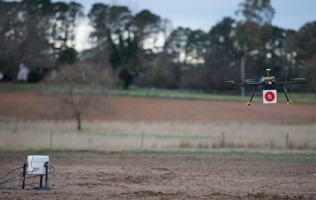International Journal of Greenhouse Gas Control ( IF 4.6 ) Pub Date : 2018-03-15 , DOI: 10.1016/j.ijggc.2017.11.018 Andrew Feitz , Ivan Schroder , Frances Phillips , Trevor Coates , Karita Negandhi , Stuart Day , Ashok Luhar , Sangeeta Bhatia , Grant Edwards , Stefan Hrabar , Emili Hernandez , Brett Wood , Travis Naylor , Martin Kennedy , Murray Hamilton , Mike Hatch , John Malos , Mark Kochanek , Peter Reid , Joel Wilson , Nicholas Deutscher , Steve Zegelin , Robert Vincent , Stephen White , Cindy Ong , Suman George , Peter Maas , Sean Towner , Nicholas Wokker , David Griffith

|
A methane (CH4) and carbon dioxide (CO2) release experiment was held from April to June 2015 at the Ginninderra Controlled Release Facility in Canberra, Australia. The experiment provided an opportunity to compare different emission quantification techniques against a simulated CH4 and CO2 point source release, where the actual release rates were unknown to the participants. Eight quantification techniques were assessed: three tracer ratio techniques (two mobile); backwards Lagrangian stochastic modelling; forwards Lagrangian stochastic modelling; Lagrangian stochastic (LS) footprint modelling; atmospheric tomography using point and using integrated line sensors. The majority of CH4 estimates were within 20% of the actual CH4 release rate (5.8 g/min), with the tracer ratio technique providing the closest estimate to both the CH4 and CO2 release rates (100 g/min). Once the release rate was known, the majority of revised estimates were within 10% of the actual release rate. The study illustrates the power of measuring the emission rate using multiple simultaneous methods and obtaining an ensemble median or mean. An ensemble approach to estimating the CH4 emission rate proved successful with the ensemble median estimate within 16% for the actual release rate for the blind release experiment and within 2% once the release rate was known. The release also provided an opportunity to assess the effectiveness of stationary and mobile ground and aerial CH4 detection technologies. Sensor detection limits and sampling rates were found to be significant limitations for CH4 and CO2 detection. A hyperspectral imager’s capacity to image the CH4 release from 100 m, and a Boreal CH4 laser sensor’s ability to track moving targets suggest the future possibility to map gas plumes using a single laser and mobile aerial reflector.
中文翻译:

Ginninderra CH 4和CO 2释放实验:气体检测和定量技术的评估
2015年4月至6月,在澳大利亚堪培拉的Ginninderra控释设施进行了甲烷(CH 4)和二氧化碳(CO 2)释放实验。实验提供了一个机会,可以将不同的排放量化技术与模拟的CH 4和CO 2点源排放进行比较,而实际排放速率对于参与者来说是未知的。评估了八种定量技术:三种示踪剂比率技术(两种移动技术);向后拉格朗日随机建模;进行拉格朗日随机建模;拉格朗日随机(LS)足迹建模;使用点并使用集成线传感器进行大气层析成像。CH 4的大部分估计值在实际CH 4释放速率(5.8 g / min)的20%以内,而示踪比技术提供了对CH 4和CO 2释放速率(100 g / min)的最接近的估计。一旦知道了释放率,大多数修订估计数都在实际释放率的10%之内。该研究说明了使用多种同时方法测量排放速率并获得整体中值或均值的能力。估计CH 4的整体方法排放率证明是成功的,总体中位数估计值对于盲释放实验的实际释放率在16%以内,而一旦知道释放率,则在2%以内。该发行版还提供了一个机会,可以评估固定式和移动式地面和空中CH 4检测技术的有效性。发现传感器检测极限和采样率是CH 4和CO 2检测的显着极限。高光谱成像仪能够对100 m处的CH 4释放进行成像,而Boreal CH 4激光传感器能够跟踪运动目标,这表明将来可能会使用单个激光和移动式空中反射器来绘制气体羽流图。











































 京公网安备 11010802027423号
京公网安备 11010802027423号